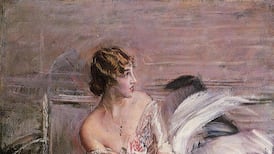‘Ramping up” is the great cliché of the coronavirus pandemic. It has been applied to everything from the acceleration of virus testing, via increased policing powers, to the supply of toilet roll. The only mercy, speaking of rolls, is that it has all but supplanted a previously ubiquitous phrase of similar meaning, long beloved of management consultants, “rolling out”.
The term seems to be especially rampant on our neighbouring island, where never in the field of human conflict can so many things have been ramped up in so short a period by so many. Perpetrators have included UK home secretary Priti Patel, who, more unusually, has also been on the receiving end of the craze.
Maybe no-one has used that exact expression about her. But if not ramped up, she has been visibly standing on a platform during her appearances at the daily press briefings, without which her diminutive frame would be obscured by the lectern.
An alternative expression, which you also occasionally hear, is “scaling up”. Yet somehow that’s not sufficiently dramatic. It must be a happy coincidence for British politicians, but verbs including the letters “mp” (pump, jump, stamp, etc) just seem to sound innately more dynamic. Not that use of 2020’s favourite buzz term guarantees that anything is really happening, of course. Much of the time, the only thing being ramped up is rhetoric.
Partly due to all this ramping, the pandemic is also lending new life to the old line about “lies, damned lies, and statistics”.
It is almost impossible to make sense of the figures with which we are assailed nightly. Especially on television, where things need to be simplified, the complexity of the information usually overwhelms even the best attempts to present it clearly.
Perhaps the imminent bicentenary of Florence Nightingale (born 200 years ago on May 12th) will be an encouragement to greater clarity.
Nightingale is more famous for lamping than ramping – the lantern she carried on her nightly rounds has become the motif of her saintliness. Less well known is that she was also a pioneer in the use and display of statistics.
One of the big insights she brought home from the Crimean War was that most soldiers there died not from bullets and cannonballs but from infections picked up afterwards in dirty hospitals. So first she collected the figures, then devised a way to present them that would be both factual and eye-catching.
Hence her trademark “coxcomb graph” –a sort of pie chart, in which soldier deaths from (a) wounds and (b) preventable infection splayed outwards like the uneven petals of a geometric rose. These were not always accurate, but they were visually striking: so much so that even some of her mentors thought such dramatics beneath the dignity of their subject.
"We do not want impressions, we want facts," chided her friend, the epidemiologist and statistician William Farr, who dismissed her concerns that text alone would be too dry. "The dryer the better," he argued. But she pressed ahead, as was her wont. And it was with applied statistics as much as rigorous hygiene that she brought nursing from the dark ages into the modern.
***
One of the personifications of those dark ages, by the way, and continuing a theme, was a character from Dickens called Sarah Gamp. A cockney midwife/nurse, she features in the novel Martin Chuzzlewit, which he published in instalments between 1842 and 1844.
Gamp was an alcoholic, among other things. A beer and gin drinker, she also enjoyed snuff and expected those provisions to be supplied, in addition to her meagre wages, by those hiring her. Her PPE, as she didn’t call it, included “a very rusty black gown, rather the worse for snuff”, which she deliberately neglected so that employers would buy her a new one, as frequently happened.
She catered with equal incompetence for both ends of the human life cycle, “lying in or laying out”. But death was her specialty and she considered lingering life an inconvenience. In one case, surveying a delirious patient “as a connoisseur might gaze upon a doubtful work of art”, she arranged his failing arms along his sides “to see how he would look” when finished.
Dickens is not noted for the depth of his female (or any) characterisation, usually. But Gamp is said to have been based on an actual midwife/nurse known to one of his women friends. She must at least somewhat representative of the reality in the 1840s, albeit that – to coin a phrase – he probably ramped it up.











